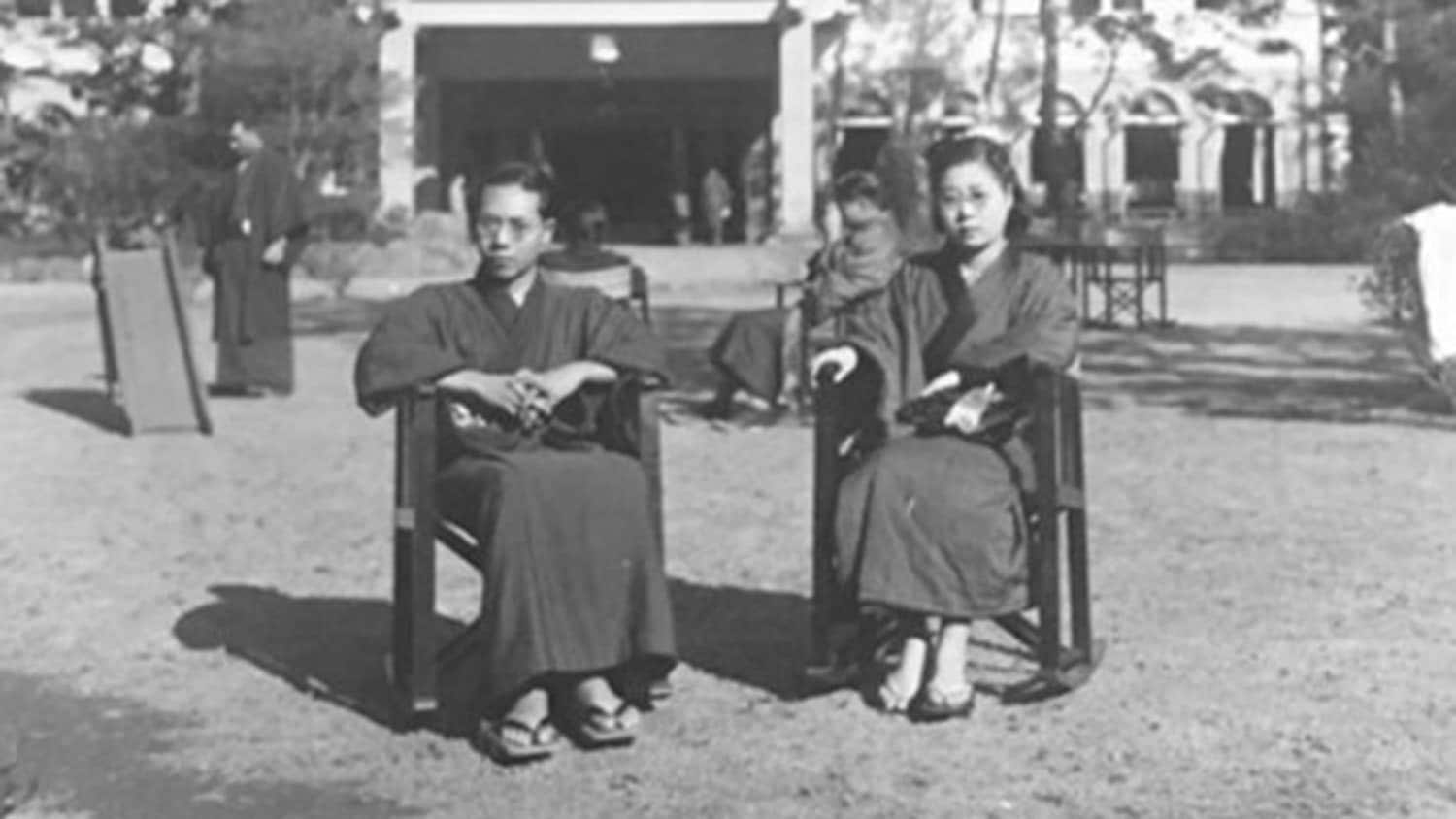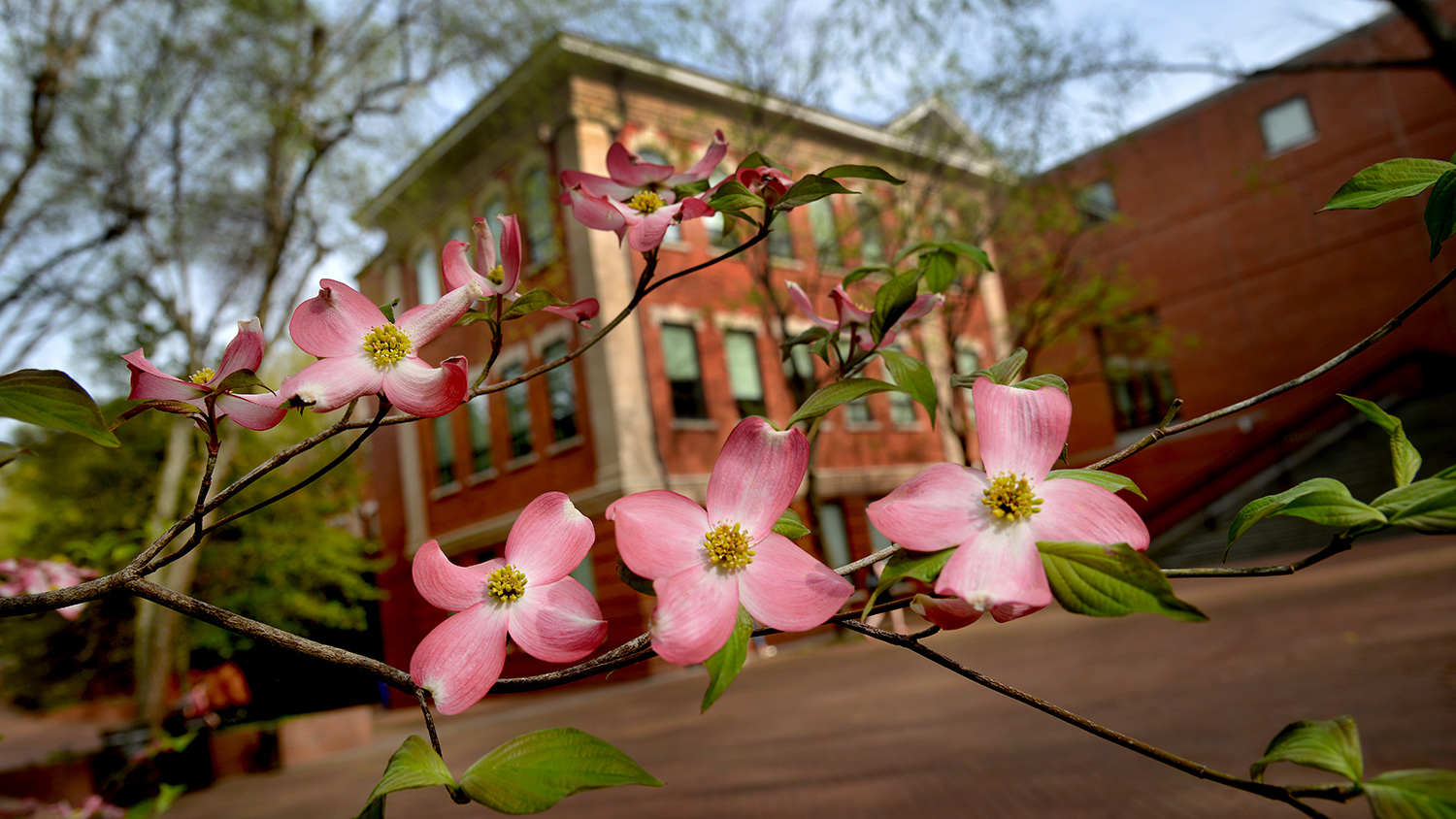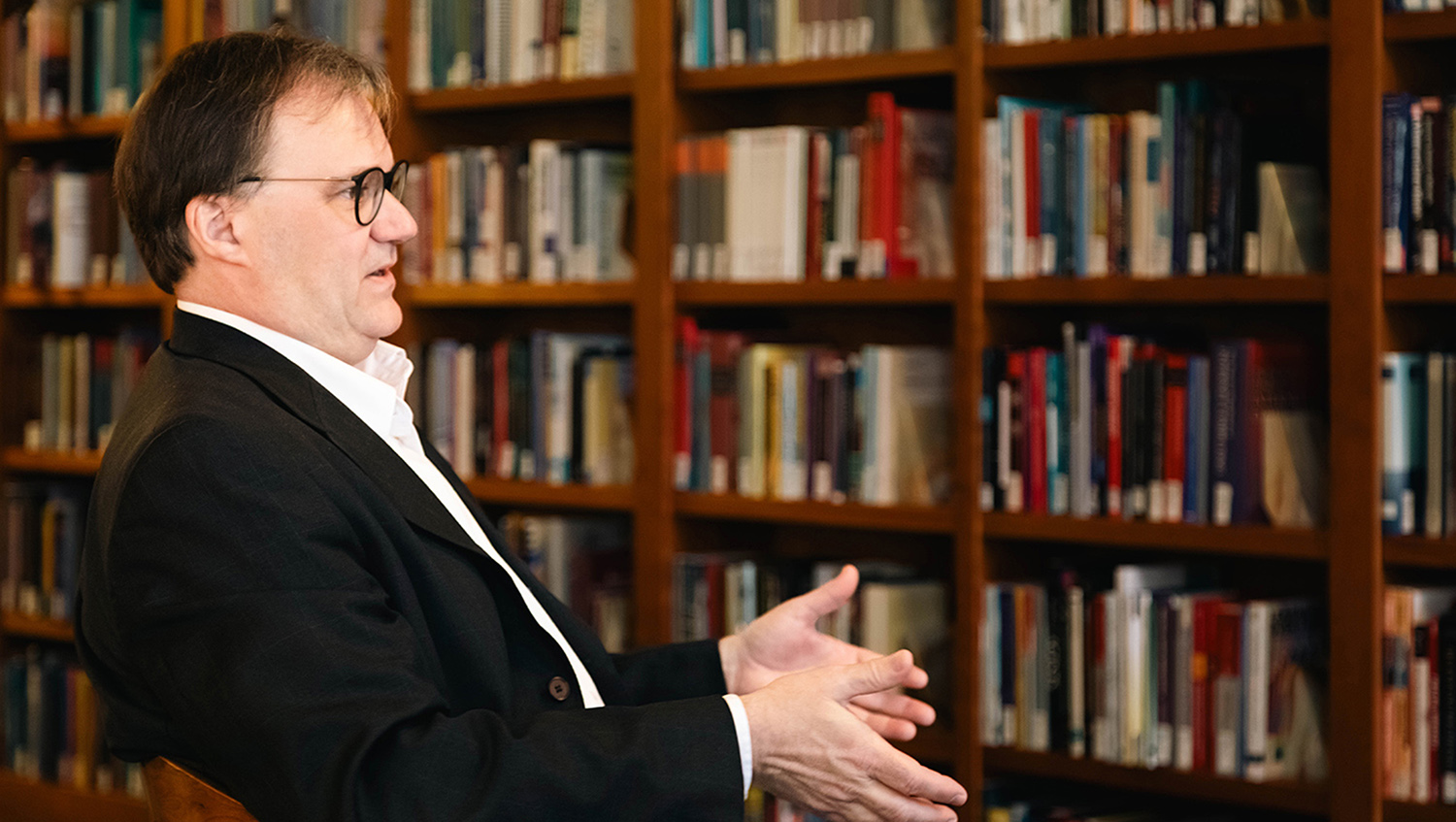Digital tools and technologies are unlocking new ways of helping us explore and understand our past, making it easier for historians to identify and tap into a wide variety of views and voices from the past.
NC State history professor David Ambaras and his colleague Kate McDonald – an associate professor of history at UC Santa Barbara – have recently unveiled an online resource that not only highlights examples of how these views and voices can illuminate our past, but outlines an approach for how other scholars can develop similar tools to explore other facets of human history. The project was supported by the National Endowment for the Humanities, under grant number HAA-266465-19.
We recently had the opportunity to talk with Ambaras and learn more about the project, titled Bodies and Structures 2.0: Deep-Mapping Modern East Asian History.
The Abstract: What exactly is Bodies and Structures 2.0? It’s not really an online book – it’s more interactive than that. How would you describe it?
David Ambaras: Bodies and Structures 2.0, which I co-direct with Kate McDonald, is a way to do multivocal spatial histories of modern East Asia and the worlds of which it has been a part. It consists of 17 individually authored modules, which examine a diverse range of topics, such as histories of disease and vaccination; narcotics trafficking; colonialism; migration; and urban life. These modules feature cutting-edge research on Japan (including Okinawa), Taiwan, China, Vietnam and Mongolia. On top of this, the site uses tags, annotations, links, and visualizations to connect and cut across the modules, giving contributors and users the opportunity to think comparatively about space, place and power.
The project brings together the various engagements with critical human geography that are taking place in our fields – history, literature, and art history in general, and East Asian studies in particular. Over the last few decades, scholars have come to see space not as an empty surface or a neutral container of human (and nonhuman) activity, but as something that is historically produced by an activity and that, in turn, informs (enables, constrains, etc.) that activity.
For example, trains don’t just cross an empty space measured in miles or degrees: they’ve helped produce that space as an ensemble of technological, social, economic, political, cultural and environmental relationships. And the contours and dynamics of that space then influence other developments, such as what kinds of movement are easy or difficult and for whom, who gets a say in the decisions regarding that space, how images and ideas about that space are then mobilized to pursue spatial projects elsewhere, and so on.
Or take another example: people long treated borders as self-evident lines on a self-evident map that neatly divide “inside” from “outside” or “domestic” from “foreign.” But more recently, we’ve come to understand borders as political and ideological constructions that connect as well as divide, that operate differently under different circumstances, and that are constantly subject to various forms of contestation, conflict, or negotiation. And these contests affect the lives of people and localities not only along the border, but across a much wider field, as well as the politics of nations and the operations of markets.
Kate and I are particularly taken with geographer Doreen Massey’s propositions about space: it is produced through interactions and relationships across multiple scales; it is multiple and heterogeneous; and it is always under construction. Massey suggests that we treat space as “a simultaneity of stories so far.” This is what drives our project to produce multivocal histories.
We use “deep mapping” and “thick mapping” as our approaches. Deep mapping explores places in all of their aspects, over time, using a variety of media to evoke different histories and meanings or senses of place, and the connectedness of particular places to other places and processes. Thick mapping, as the authors of Hypercities: Thick Mapping in the Digital Humanities (2014) have described it, is an approach to cognitive mapping that rejects a single, absolute viewpoint, looks for all kinds of connections across space and time, can branch infinitely, and is always open to new voices and participants.
Deep and thick mapping entail “liberating the map” from a singular dependence on cartographic representation and the ways of thinking that have informed it – a “god’s eye view” of absolute, gridded space that can be mastered by the modern state. While we don’t reject the use of cartographic maps, we see them as but one of a number of possible ways of making one’s way through space and across places. We also treat them as objects of historical study and as elements of deep or thick maps in themselves.
In this spirit, Bodies and Structures explores the potential for digital tools to produce media-rich deep and thick maps, and thus to transform the ways we research, represent, and teach history and the humanities. We embrace the notion that spatial history is a process, not a result. We treat this process as an open-ended conversation that requires lots of input from lots of people to develop its potential.
TA: What distinguishes this from other online scholarly works?
Ambaras: In Bodies and Structures, there is no single story line, even within the individual modules! These are interactive resources, and we encourage contributors to experiment with nonlinear forms of exposition. We anticipate, given the web-based nature of the project, that visitors will take a nonlinear approach to exploring the contents. This is very different from the more standard GIS-based digital spatial history (gazetteer, database, etc.), which relies above all on the cartographic map for its structure. It also differs from Story Maps-type projects that constantly push the reader/viewer forward (or downward) along a single path.
The collaborative dimension is central. Kate and I developed some basic ideas for the project together, and then as module builders joined in, we developed the first and now second iterations of the site through ongoing in-person and (since COVID) virtual workshops, Slack conversations, and Google documents. Key aspects of the conceptual framework, such as the tag index, came about through these conversations.
This collaboration is also evident in the multiple ways the modules link across content streams (links, pathways, notes, tags, Google map, and other visualizations), which were generated through conversations among the contributors (both the content authors and the platform developers)
It’s easy to get distracted by following unanticipated pathways or connections in Bodies and Structures 2.0, but that’s part of the point of the project: we want people to encounter it and find their own way around.
TA: This is obviously of interest to scholars of modern East Asian history, but who else would take an interest in what you’ve done here?
Ambaras: People interested in spatial history/humanities. Any scholars looking to develop media-rich work, explore new/alternative ways of building narratives and arguments, and think about how to build connections across different topics. Anyone looking to communicate their work to the public in innovative and appealing ways. And educators looking for ideas/models for student projects, from media-rich single page projects to more complex undertakings.
TA: To what extent might this serve as a template for similar efforts?
Ambaras: We hope that Bodies and Structures becomes a template or model for other scholars and purveyors of knowledge. Scalar, the open-source software we used to create Bodies and Structures, is easy to work with. It provides a variety of ways of presenting and organizing information, and for visualizing one’s queries and findings. There are a lot of great Scalar projects out there, but we think we’ve really built one that exploits the platform to its fullest. Plus, the Scalar tools that we’ve helped to develop as part of the NEH grant that supported Bodies and Structures 2.0, such as the Lenses search and visualization tool, are now fully integrated into the standard Scalar code and are already in use by other scholars.
After we released Bodies and Structures 1.0, a colleague who is now working in a large state university system on a multi-million dollar project for mapping information related to public health disasters contacted me to discuss how her group might use Scalar to communicate their work to the public. We hope that Bodies and Structures 2.0, which is even more visually rich and contains more data management and visualization tools than 1.0, will attract interest from such quarters.
TA: You’ve been a history scholar since the 1980s, so you have a wealth of experience in the field. What did you learn while working on this project?
Ambaras: For the last 7-8 years I’ve been very invested in exploring theories of space and place and methods of doing spatial history. Much of that time coincides with my work on Bodies and Structures. What Bodies and Structures has really helped me to reflect on is, first, how we need to be attentive to the multiplicity of spatial relationships, constructs, imaginaries, rationalities, etc., at work in any given historical moment, and how these affect and are affected by the movement (or immobility) of human and nonhuman beings and material and immaterial things. And, second, how we might be more experimental in the ways we combine historical sources into new spatial stories.
What this means, to me, is that the single-author model of most history/humanities scholarship needs a fundamental rethinking. Collaborative writing and project design with project co-director Kate McDonald has been an eye-opener, and has allowed us to explore shared theoretical and empirical interests while having an ongoing, productive conversation that I think has been transformative for both our work. What I really appreciate is how our different ways of thinking have interacted to produce something unexpected and, I think, infectiously exciting.
Meanwhile, collaboration with a collective of module builders/authors has also led to a productive rethinking of categories that we’ve built into version 2.0 – drawing on but also different from, and conceptually perhaps more rigorous than, what we had already developed for version 1.0. The ongoing nature of the conversation, and the ongoing reworking of the project/site as a whole, has been far more productive than the traditional one-off conference to edited volume approach that has long marked our field.
Digital work is important – not just for “big data” projects (because while our site itself contains a lot of data and metadata, we are each and collectively still rather “small data” scholars who do close reading of limited amounts of sources). Digital work can evolve in ways that the traditional monograph (book, book chapter or journal article) can’t. It can be linked immediately to other work as it appears; it can develop rhizomatically – one can add new branches, for example, or update work while making clear that this is a living, breathing process rather than a set-in-stone product. (Meanwhile, the media archaeology that this permits also shows dimensions of scholarship that are not readily visible in traditional print media. Each page in Scalar has an option to show all available versions, so a viewer can track – or deep map – the development of a page or group of pages. And this in turn can become an object of historical or media inquiry.)
This in turn asks for new ways of writing and designing projects. While we’re still working within the general paradigm of “the book” (Scalar was designed as a new stage in the evolution of the book), we are pushing it to its limits in terms of the experience of “reading” – getting lost, making connections, and encountering “the page” as more than just flat text and image but as part of various relationships). And here, too, collaboration with digital developers has led us to ask new questions about what is possible, what we might want to see in a platform for our scholarship and for humanities or multidisciplinary scholarship moving forward. In other words, we have traditionally written without giving much thought to the final medium through which our work will be disseminated. We’ve been grateful that publishers (mainly academic publishers) will accept our manuscripts, and we’ve left the design (such as it is) to them. A platform like Scalar gives us much more control over how our work looks and feels, and we should be willing to ask publishers to work with us to develop new kinds of organization methods for the work we send them.
Digital work is labor-intensive in different ways from traditional scholarship – or rather, it combines the labor-intensive requirements of traditional scholarship with a new set of labor-intensive demands. And many humanities departments are not yet equipped to assess it properly (just as many practitioners are initially unprepared to document ALL of the different things they’re doing to push their projects forward). We need to be much more attentive to this aspect of the scholarly career path moving forward.
This post was originally published in NC State News.
- Categories:



